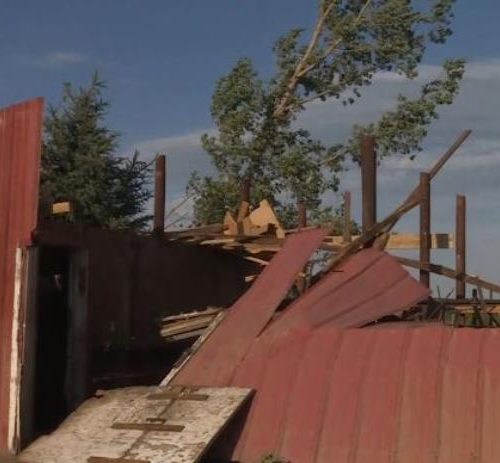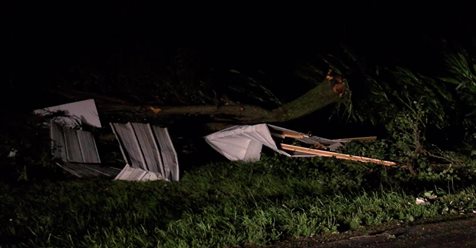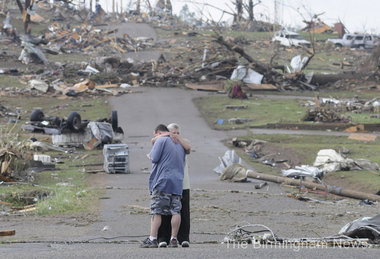The National Weather Service in Wichita ordinarily issues warnings for a host of tornadoes each spring. Kansas averages more than 100 twisters annually, more than many countries do.
But in 2020, the Weather Service office in Wichita didn’t log a single confirmed tornado.
That means parts of the East Coast — including New Jersey, New York and Pennsylvania — dealt with more tornadoes than Kansas.
The unusual Plains tornado drought resulted from a larger weather pattern that proved unfavorable for widespread severe thunderstorms and tornadoes over the Great Plains, a region that typically sees springtime tornado swarms. The respite from storminess was welcomed by residents already beleaguered by the coronavirus and its associated social and economic hurdles.
During the entirety of 2020, Wichita’s Weather Service office issued only two tornado warnings, far below its annual average of 36. Neither of the two warnings panned out, as each storm failed to produce a confirmed twister. Moreover, neither warning was issued in May, a month known for its active tornado activity as seasons clash — with warm, moist air from the Gulf of Mexico meeting up with colder, drier air near the Plains.
“It’s quite amazing, to be honest with you,” Chance Hayes, warning coordination meteorologist at the Wichita office, said in an interview. “Over the past 20 years, the number of tornadoes in Kansas has seen an increase. In 2020, we just went into the gutter.”
There have been five years since 1950 when the Wichita office’s area recorded only two tornadoes, but 2020 marks the first during which none have formed.
For comparison, the National Weather Service office in Mount Holly, N.J., preliminarily recorded 23 tornadoes in its warning area; the Albany, N.Y., office saw 15 twisters; and the Portland, Ore., office recorded five.
“We [thrive] on forecasting severe weather,” Hayes said, “so it was quite a bit of an anomaly for us. We serve 26 counties in central and southern Kansas.”
It’s not just Hayes’s region that found itself in the midst of a statistical tornado deficit this year; all of Kansas scraped the bottom of the tornado barrel, as did much of the Plains.
“The preliminary number for the state is 17 tornadoes,” Hayes explained. “That’s lower than the average number of tornadoes that our office experiences in [just our] counties.”
In the territory of the neighboring Dodge City office, only one “classic” Great Plains tornado formed — on a day when storms weren’t forecast and the chance of rain was advertised as zero percent.
Tornado activity across the nation as a whole neared record high levels in April, with 351 preliminary tornado reports tallied as multiple outbreaks struck the South. The month proved the deadliest for tornadoes since 2011. One of the tornadoes that formed was 2.25 miles wide.
It wasn’t just Kansas that had a tornado drought. Other traditional tornado haunts of western Oklahoma, Nebraska and eastern Colorado also lacked tornado watches in 2020, with few recorded tornadoes.
Missing ingredients
Hayes and his colleague, Roger Martin, also a meteorologist at the Wichita office, pored over data to figure out what exactly was behind Kansas’s sleepy tornado season. They pinpointed three contributing factors.
“One of the issues is that you need to have moisture,” said Hayes, who noted that was in short supply over the Central Plains this spring. “The number of days with dew points over 60 degrees was well less than 20.”
Dew point is a measure of how much water is present in the air. Sixty degrees is a rough threshold between refreshing air and air bordering on humid. Anything over 70 is muggy to oppressive.
“The last time we had experienced dew points this low was in 1988, so I think that’s one of the major issues we had to deal with,” Hayes said.
A few days did feature ample moisture to spark severe thunderstorms, but none coincided with the presence of a trigger mechanism. That meant that the atmosphere never took advantage of any of its pent-up rage.
Another component necessary to spin up rotating supercell thunderstorms and tornadoes? Wind shear. That’s a change of wind speed and/or direction with height. Over the Great Plains, wind shear is usually maximized when surface winds are out of the east-southeast and upper-level winds are out of the southwest. Winds from the southwest tend to be warm and carry moisture from the Gulf of Mexico.
“When we looked at the average wind speed and direction for the month of May, we had a significant number of days with northerly winds,” Hayes said. “That suppressed the moisture south of the state. … We just did not have all the ingredients we need to generate supercell thunderstorms.”
The prolonged cool, dry flow and lack of spin for the atmosphere to tap into meant that instability, or the energy needed to generate rising pockets of air, was hardly anywhere to be found.
“Spring 2020 featured much … lower than normal instability across the central and southern Plains,” Hayes said.
Hayes, who has been at the Wichita office since 1995, said that he has never experienced such a quiet season. While it was dull from a meteorological standpoint, he appreciated the calm in a year that’s already been overwhelming for just about everyone.
“I know there were a lot of concerns folks had about sheltering in place with the coronavirus and how to go about that,” Hayes said. “Fortunately, here in Kansas, that’s one of the issues we really didn’t have to cross.”
by Matthew Cappucci (2020, Dec 31) The Washington Post




